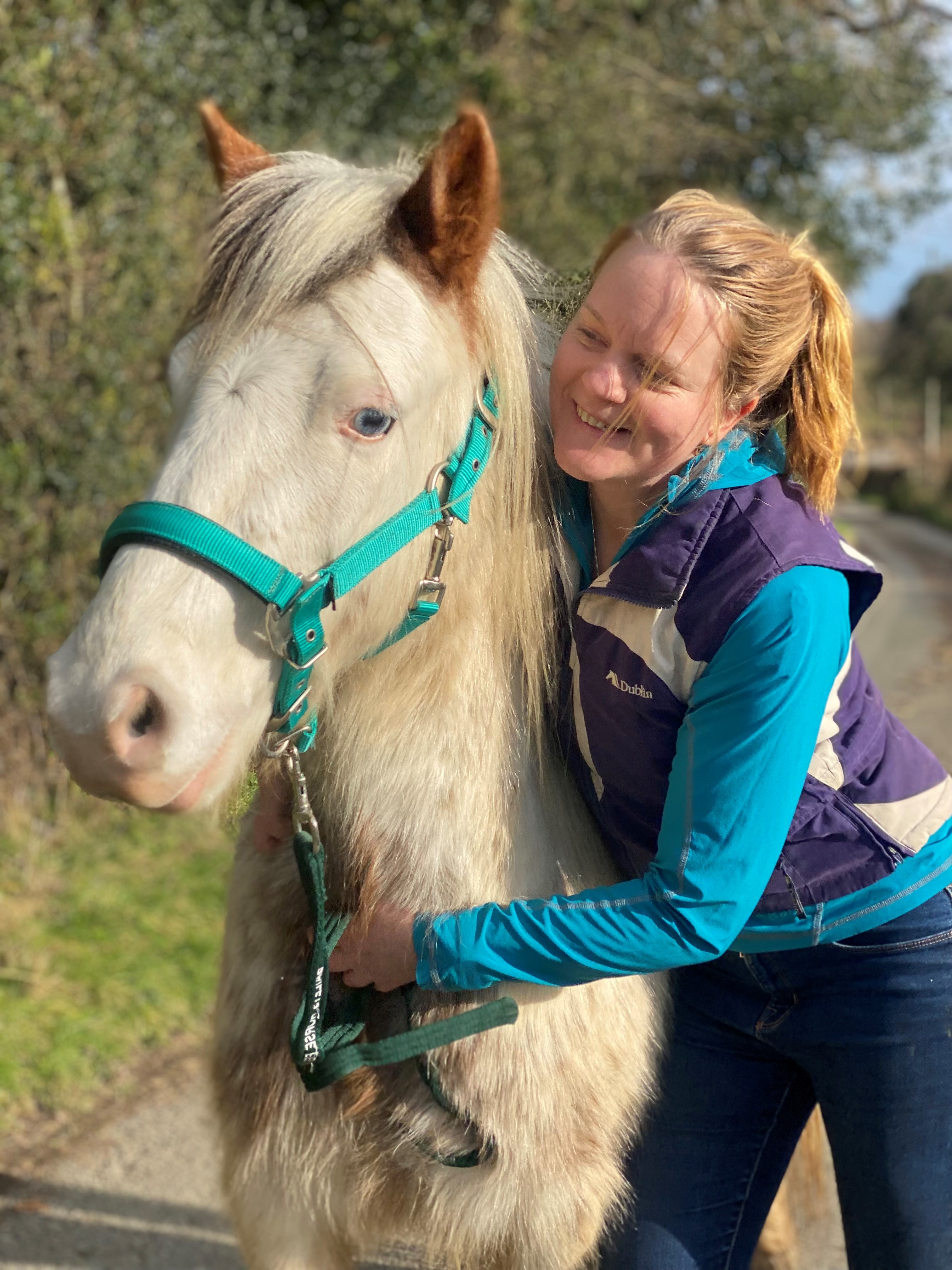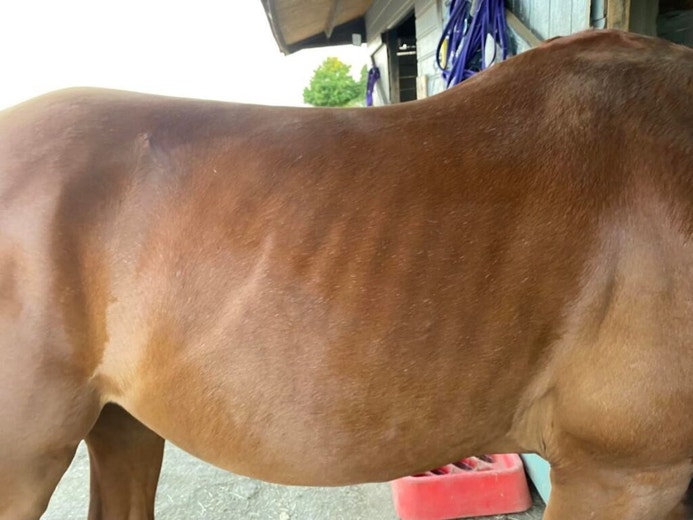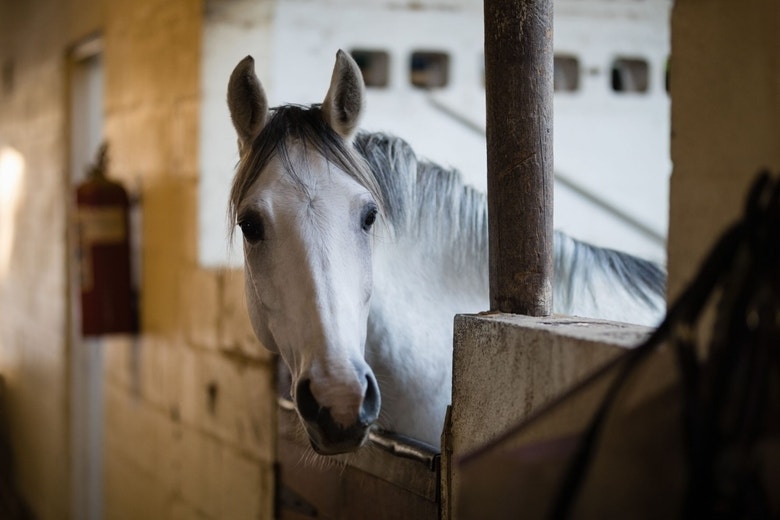Spring is coming- Tamzin Furtado

Tamzin is a social scientist with a background in global health, and has a specific interest in the interconnections between human and animal health and wellbeing. She completed a PhD at the University of Liverpool studying how we can improve the management of obesity in horses, particularly focusing on horse-human relationships and human behaviour change. She now works on projects covering a wide range of aspects of understanding human behaviour in order to improve companion animal welfare. In our latest blog Tamzin gives her thoughts on how we can manage our good doers this spring...
It’s February, the daffodils are starting to appear, and all the horse people are sharing memes about the end of the dark nights and they’re all excited. But I’ve got a good doer – a little yeti of a companion pony, extremely adorable – and like thousands of you, for me it’s that time of year where the imminent spring is making me think: danger is coming. Every year, we face the same dilemmas with our easy-keeper ponies. How shall I manage this year? When shall I begin? How can I make this as easy as possible for myself, and as pleasant as possible for Bertie (Bertie’s the yeti, in case you didn’t guess).
As well as a horse owner, I’m a researcher in equine welfare, and I did a PhD about equine weight management, so I’ve spent an inordinate amount of time thinking about fat ponies. So, what have I learnt that will make it easier for us? First I’ll explain why we’ve ended up in this situation with a massive population of overweight ponies; then I’ll explain what I think we can do about it.
Why do so many people struggle to manage their horses’ weight?
I’ll do it tomorrow.
One of the difficult things about obesity, compared with other issues, is that it creeps on very slowly, so often there’s no one day where you think “aha, today I need to get serious” – unless your pony comes down with laminitis, of course. There’s some good psychology research that can explain this; as humans, we’re not very good at planning for future risk, we’re much better at concentrating on how we feel on the day. On top of that, we’re way more driven by our routines and habits than we like to think. That’s why so many of us neglect healthy eating, yoga and exercise even though we know FULL WELL it would make us feel better in the long run; we prioritise our daily lives over the future, and we just like how things are – it’s hard to change, find time for that yoga class, find energy to cook something else.
In my heart of hearts, I don’t really want to
One of the biggest issues with equine weight management is that many of the options available to us are miserable, both for us and the for the horse. None of us wants to keep a horse hungry or sad, and none of us wants the extra work of soaking hay (I mean, really!). In my own research, this was one of the biggest issues for people, and it’s totally understandable. My research included ponies who would lay down because they didn’t want to be ridden, jumped out of their bare paddocks, kicked their owners with frustration –we need to find better ways both for our horses and ourselves.
We have an obesogenic environment
Lots of people blame horse owners for all these fat ponies, but that’s unhelpful. The UK is, in many ways, an “obesogenic” environment for horses; that is, an environment that’s working against us. Our warm winters, our rye grass livery yards, our commercial environment around rugs and feeding; our dangerous roads that make it difficult to hack, boring environments where our horses have nothing to do but stand and eat – and to top it all, we have such a wonderful selection of native ponies designed to live in conditions which are the exact opposite to what we’re providing. The fact we have this environment doesn’t make it OK for us to leave our ponies overweight, because we know it’s detrimental to their health - but it does mean we can think a bit differently about how to change things up.
What can we do about this?
NOTE: The only caveat on everything I say from here on: assess how much risk your horse is in from laminitis or other obesity related diseases; if they are severely overweight, have high insulin readings (your vet can test this with a blood test), have PPID, or have a history of laminitis, you are going to need to be more proactive than if your horse is “just” another good doer with a body condition creeping up the scale. Either way, you can adapt my suggestions below – but talk to your vet and keep that overall risk in mind when making a plan.
Having spent a lot of time talking fat ponies over the past decade, the best advice I can give you is to turn what you know on its head. Instead of thinking about how you can restrict your horse, how can you make their life even nicer or more enriching, in ways that will make their environment less obesogenic?
Example: Exercise
Many of our horses get very little exercise. Yet, in the wild, horses would roam anything from 20 to 100 km a day, by choice (I know! Those were shetlands!). We often make exercise seem like a negative thing, by calling it “work” and doing lots of circles; we assume inherently that it’s not much fun for the horse. What about what our horses would like, can we use that to our advantage?
To give an example – exercise was one of the best options for weight management for Bertie, but he is a companion pony and too small for me to ride, and when he arrived he was very anxious, so I had to think about what was possible (also we have no arena or flat field for any lunging or pole work). I started off by doing short walks – literally a few mins – with him and a calm companion, and allowing him to sample the local hedgerows to build a positive association with going out. We gradually built up his confidence to go further, and then started again from scratch about walking on his own. Now, I take him running with me – each spring we do couch to 5k together! I also “pony” him from another horse (ride and lead). Building this up slowly, and focussing on his positive experiences, has meant this is fun for both of us, and something we really look forward to – he runs to his headcollar and asks to go out. What would you and your horse enjoy? Inhand walks? Horse agility? A planned beach hack so you have something to keep you fit? Finally booking in that horse holiday you wanted to do in Wales somewhere? Make fun plans, but the key is to make sure it’s as fun for your horse as for you.
Example: Environment
Obviously, exercise isn’t always the answer, and also on its own may not be enough. Earlier I mentioned how boring our horses’ environments often are; square fields with only a few types of grasses, sometimes limited time with other horses, and stables. The more horses’ needs are fulfilled by providing interactive, interesting environments with social time and low-calorie forage, the less obsessed with food our horses will be. This is why track systems have become so popular, because they provide non-obesogenic environments where horses have choice, freedom, social time, and low-calorie forage. However, if you can’t put in a track system (and they don’t necessarily suit all horses anyway!) you can still use some of the same principles – enriched water stations; toys; herb gardens; branches from edible trees; hay balls and much more. If you have to keep your horse separate from others, can you add in some time grooming with another, or playtime in the arena?
What else can I do?
You will likely still have to do some things that will restrict your horse a little, such as using small holed haynets, soaking hay, using straw as a portion of forage, or using a grazing muzzle. There are lots of great resources online for all of these so I won’t go into detail on the merits of them here. Instead, think about what options will be the nicest experience for your horse. For example, a grazing muzzle (carefully introduced with positive reinforcement) is the perfect solution for some horses, allowing them to spend time out with their buddies in the field. Others might dislike it intently, and require restricted forage in the stable. In this case, we can make that restriction a nicer experience, for example by splitting the portion into lots of different sections, and putting them in different places in the stable; maybe some in a small holed net, others in a large holed net; some mixed with straw; some even having had some herbal teas poured on them to give the horse some different experiences, smells, and choice.
What about you?
By focussing on your horses’ experience you’ll already likely feel happier about weight management, but there’s lots more you can do to increase your motivation. First, make sure to keep a diary of what you’ve changed and when (on your phone if necessary) and use measurements of your horse, with photos, to track what is and isn’t working. It’s ideal if you can also have an experienced and trusted person (instructor? Yard manager? Physio? Friend?) who sees your horse regularly to help you to be objective about how your horse is looking, and how they’re coping with the changes you’re putting in place. Even better, if you can buddy up with someone else on the yard managing weight, you can help motivate one another – help with hay soaking, help with chores, arrange lessons together – whatever makes sense in your situation.
You can use our free guide here to decide what will work best for you, your horse, and your yard.
Good luck this summer, comrades. We can do this!





